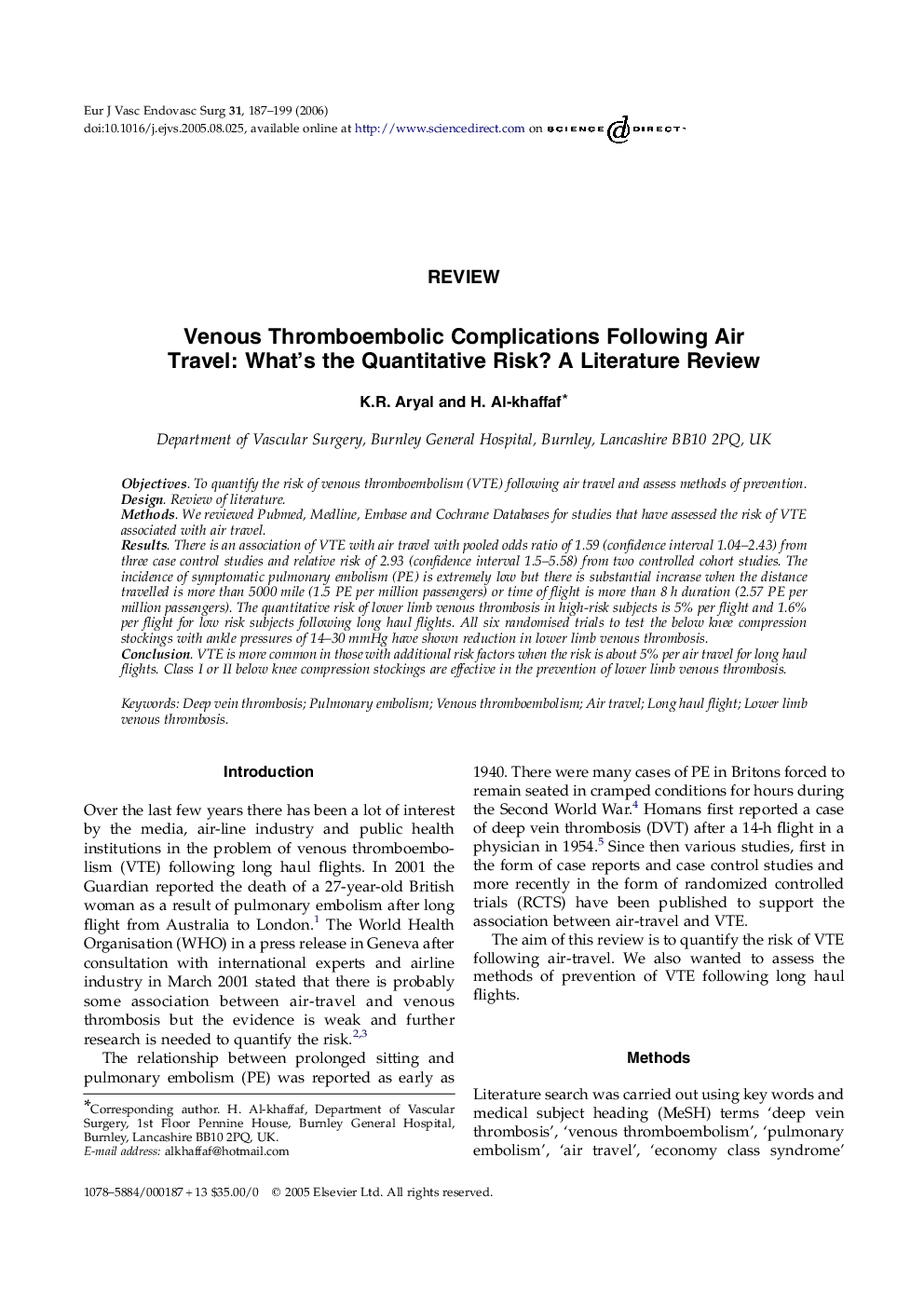| Article ID | Journal | Published Year | Pages | File Type |
|---|---|---|---|---|
| 2915238 | European Journal of Vascular and Endovascular Surgery | 2006 | 13 Pages |
ObjectivesTo quantify the risk of venous thromboembolism (VTE) following air travel and assess methods of prevention.DesignReview of literature.MethodsWe reviewed Pubmed, Medline, Embase and Cochrane Databases for studies that have assessed the risk of VTE associated with air travel.ResultsThere is an association of VTE with air travel with pooled odds ratio of 1.59 (confidence interval 1.04–2.43) from three case control studies and relative risk of 2.93 (confidence interval 1.5–5.58) from two controlled cohort studies. The incidence of symptomatic pulmonary embolism (PE) is extremely low but there is substantial increase when the distance travelled is more than 5000 mile (1.5 PE per million passengers) or time of flight is more than 8 h duration (2.57 PE per million passengers). The quantitative risk of lower limb venous thrombosis in high-risk subjects is 5% per flight and 1.6% per flight for low risk subjects following long haul flights. All six randomised trials to test the below knee compression stockings with ankle pressures of 14–30 mmHg have shown reduction in lower limb venous thrombosis.ConclusionVTE is more common in those with additional risk factors when the risk is about 5% per air travel for long haul flights. Class I or II below knee compression stockings are effective in the prevention of lower limb venous thrombosis.
